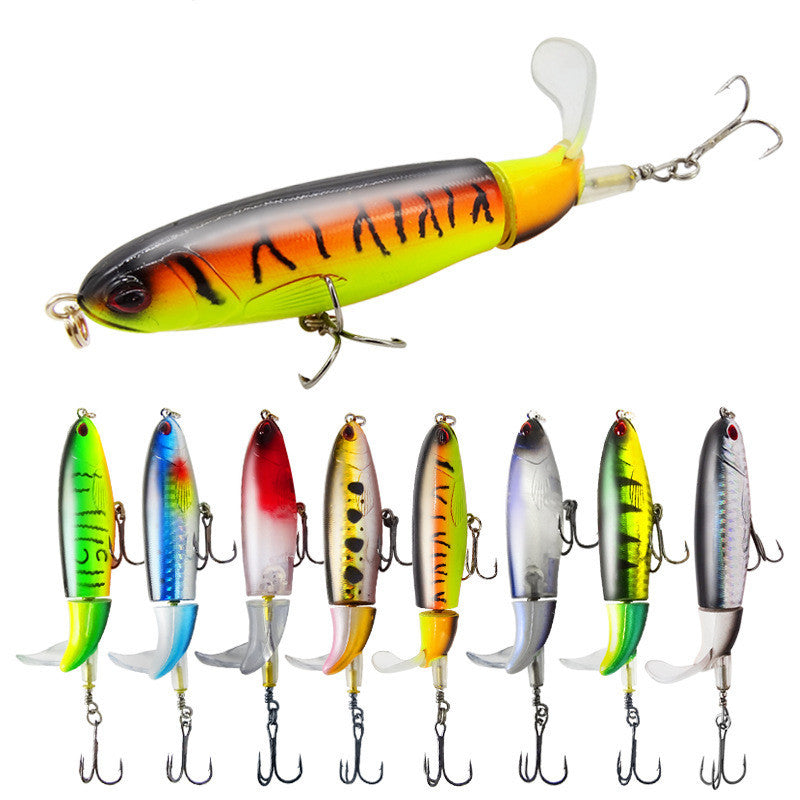Introduction
Choosing the right lure color can be the difference between landing a trophy fish and coming home empty-handed. Many anglers rely on personal experience, but scientific research provides a deeper understanding of how fish see. Unlike humans, who have three types of cone cells for detecting red, green, and blue light, fish have vision adapted to their environment. Factors such as water depth, clarity, and species-specific differences all influence how fish perceive colors. This article summarizes current research on fish vision and its application to lure selection.
Fish Eye Structure and How They See Color
Fish eyes are similar to human eyes but have adaptations that help them survive underwater. Key features include:
-
Rod Cells for Low-Light Vision: These allow fish to detect movement and contrast, especially in dim environments.
-
Cone Cells for Color Detection: Some fish have two, three, or even four types of cone cells, allowing them to see a range of colors, including ultraviolet (UV) light.
-
Tapetum Lucidum: This reflective layer behind the retina, found in species like walleye, helps fish see better in low-light conditions.
Research shows that freshwater species like bass and trout can distinguish colors, but their ability to see red decreases with depth due to how light is absorbed in water (Loew & McFarland, 1990; Bowmaker, 1995).
How Light Affects Color Visibility in Water
Light behaves differently underwater than in the air, affecting how fish see colors. Studies show:
-
Red light disappears first, often fading beyond 15 feet in clear water.
-
Orange and yellow last slightly longer but begin fading around 25 feet.
-
Green and blue penetrate the deepest, remaining visible at depths beyond 50 feet (Jerlov, 1976; Lythgoe, 1988).
-
UV light is visible to certain fish species, especially in deep or murky water (Losey et al., 2003; Marshall et al., 2015).
By understanding how colors change underwater, anglers can select lures that remain visible to fish at their target depth.
Best Lure Colors for Different Conditions
Based on scientific research, here are recommended lure colors for different environments:
-
Clear Water: Natural colors like greens, browns, and translucent shades blend in best.
-
Murky Water or Low Light: High-contrast colors like chartreuse, white, and black increase visibility.
-
Deep Water (Below 20 ft.): Blue, violet, and UV-reactive lures stay visible longer.
-
Overcast vs. Sunny Conditions: Bright lures (orange, pink) work well in low light, while natural tones are more effective in bright sunlight.
Research by Hawryshyn and Harosi (1994) shows that fish adjust their vision to match ambient light, further supporting strategic lure selection.
Conclusion
Scientific studies provide valuable insight into how fish see, helping anglers make better lure choices. Understanding fish eye anatomy, light penetration, and species-specific vision can lead to more successful fishing trips. Future research into advanced lure technology, such as biofluorescent materials, could further improve angling techniques.
References
Bowmaker, J. K. (1995). The visual pigments of fish. Progress in Retinal and Eye Research, 15(1), 1-31.
Hawryshyn, C. W., & Harosi, F. I. (1994). Spectral characteristics of visual pigments in teleost fish. Vision Research, 34(11), 1385-1392.
Jerlov, N. G. (1976). Marine Optics. Elsevier.
Loew, E. R., & McFarland, W. N. (1990). The underwater visual environment. In R. Douglas & M. Djamgoz (Eds.), The Visual System of Fish (pp. 1-43). Springer.
Losey, G. S., Cronin, T. W., Goldsmith, T. H., Hyde, D., Marshall, J. N., & McFarland, W. N. (2003). The UV visual world of fishes: A review. Journal of Fish Biology, 63(4), 931-948.
Lythgoe, J. N. (1988). Light and vision in the aquatic environment. Handbook of sensory physiology, 5, 57-82.
Marshall, N. J., Cortesi, F., & Carleton, K. L. (2015). Vision and visual signaling in deep-sea fish. Philosophical Transactions of the Royal Society B: Biological Sciences, 370(1667), 20140242.

0 comments